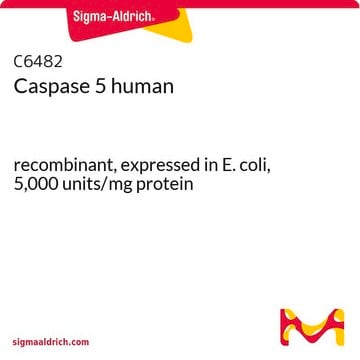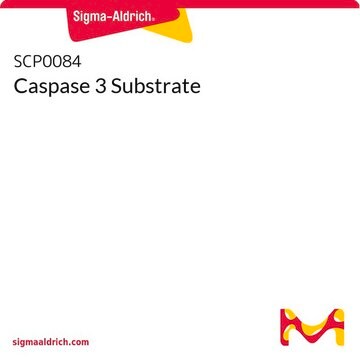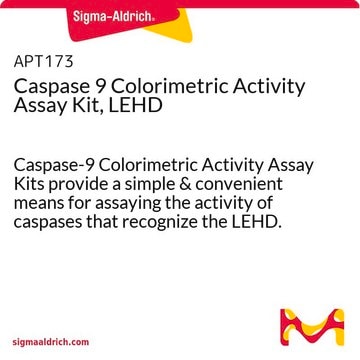C8726
Caspase 9 human
≥90% (SDS-PAGE), recombinant, expressed in E. coli (C-terminal histidine-tagged), buffered aqueous solution, >2,000 units/mg protein
Synonim(y):
ICE-Lap6, Mch6
About This Item
Polecane produkty
rekombinowane
expressed in E. coli (C-terminal histidine-tagged)
Poziom jakości
Próba
≥90% (SDS-PAGE)
Postać
buffered aqueous solution
aktywność właściwa
>2,000 units/mg protein
masa cząsteczkowa
N-terminal prodomain plus the large subunit. 36 kDa (caspase 9 expressed as a C-terminal histidine-tagged protein appears as a two-subunit protein)
small subunit 13 kDa (subunit containing the histidine tag)
numer dostępu UniProt
Warunki transportu
dry ice
temp. przechowywania
−70°C
informacje o genach
human ... CASP9(842)
Szukasz podobnych produktów? Odwiedź Przewodnik dotyczący porównywania produktów
Działania biochem./fizjol.
Definicja jednostki
Postać fizyczna
Kod klasy składowania
12 - Non Combustible Liquids
Klasa zagrożenia wodnego (WGK)
WGK 1
Temperatura zapłonu (°F)
Not applicable
Temperatura zapłonu (°C)
Not applicable
Środki ochrony indywidualnej
Eyeshields, Gloves, multi-purpose combination respirator cartridge (US)
Certyfikaty analizy (CoA)
Poszukaj Certyfikaty analizy (CoA), wpisując numer partii/serii produktów. Numery serii i partii można znaleźć na etykiecie produktu po słowach „seria” lub „partia”.
Masz już ten produkt?
Dokumenty związane z niedawno zakupionymi produktami zostały zamieszczone w Bibliotece dokumentów.
Nasz zespół naukowców ma doświadczenie we wszystkich obszarach badań, w tym w naukach przyrodniczych, materiałoznawstwie, syntezie chemicznej, chromatografii, analityce i wielu innych dziedzinach.
Skontaktuj się z zespołem ds. pomocy technicznej








